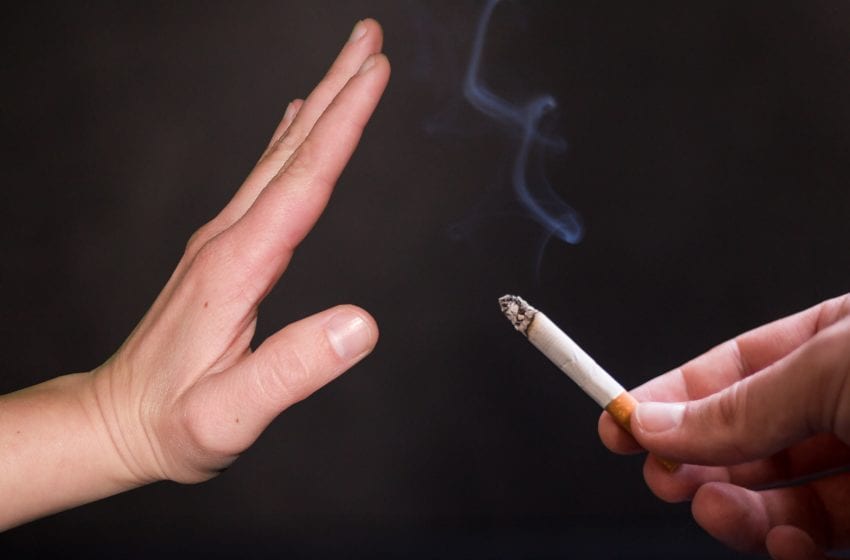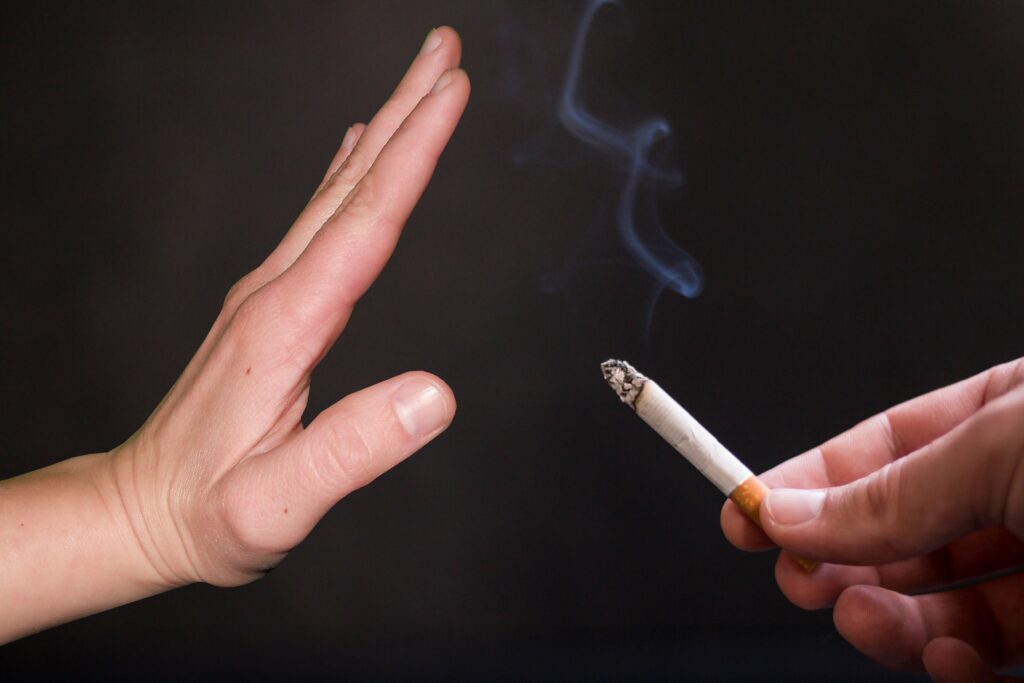Consumer’s Choice
- Harm Reduction This Issue
- May 7, 2021
- 19 minutes read


INNCO works with consumer advocacy groups to promote tobacco harm reduction around the globe.
By Timothy S. Donahue
Most of the world’s cigarettes are consumed in low-income to middle-income countries (LMICs). From Armenia to Zambia, these countries can also have high rates of adolescent smoking, particularly among males. Rates in some countries can reach as high as 46 percent, according to the U.S. National Institutes of Health. Research suggests that 80 percent of the world’s combustible cigarette users are in LMICs.
While numerous studies have shown otherwise, the World Health Organization (WHO) has long insisted that less risky nicotine products, including vapor products and e-cigarettes, are as harmful and dangerous as combustible tobacco products and should be banned or heavily regulated. The International Union Against Tuberculosis and Lung Disease (The Union), a Bloomberg partner for The Initiative to Reduce Tobacco Use, published its fourth position statement on e-cigarettes last year. It called for a blanket ban on all electronic nicotine-delivery systems (ENDS) and heated-tobacco products (HTPs) in all LMICs. These organizations, typically through groups funded by Michael Bloomberg, the billionaire anti-smoking advocate, will often donate millions of dollars to poor or struggling countries if governments agree to ban or heavily restrict access to less risky products.
As a result of policies based on false information from organizations such as The Union and the WHO, nicotine consumers in LMICs often have no delivery system available other than combustible products. Experts say that the lure of massive amounts of funding is just too great for such countries to resist.
The International Network of Nicotine Consumer Organisations (INNCO), a global advocate for sensible tobacco harm reduction (THR), states in a recent position paper that bans on ENDS are overly simple solutions that make the problems that come with combustible cigarette use worse. It also states that reduction and substitution are valid goals for smokers in LMICs as replacing combustible tobacco with alternative nicotine products can reduce risk of harm by at least 95 percent.
“The hundreds of millions of people who smoke in these countries should have the ability to make decisions about safer nicotine products, particularly when their own health is on the line,” said Samrat Chowdhery, president of INNCO’s governing board. “Overly simplistic policy solutions, such as proposed bans on all ENDS and THR products by the Bloomberg Philanthropies-funded The Union, are being offered as a blunt and impractical tool for a situation that requires pragmatism and nuance.”
The need for INNCO
INNCO was founded in 2016 to build cooperation between the growing number of global associations that advocate for THR. An organization can join INNCO if they are nonprofit, consumer-controlled and focused on tobacco harm reduction. The organization has 40 members in 35 countries, including the U.S.-based Consumer Advocates for Smoke-free Alternatives Association, a well-established advocacy group that raises awareness and protects the rights of consumers to access reduced harm products. INNCO also has members from Canada, Denmark and Greece to the Philippines, Brazil and Kenya.
The organization continues to grow. “We are enlisting new members in several countries,” Chowdhery told Vapor Voice after the release of the position paper in March. “We are helping consumers form organizations where there are none. Africa came on board, where we have four, five members from that region this year, and since 80 percent of smokers do live in LMICs, it’s an additional focus that we have developed. It is something that, with this paper, we want to really say, ‘OK. We want to participate in discussions on these issues in LMICs.’”

When The Union released its position paper calling for outright bans, Chowdhery says the recommendations were discriminatory. It was centered on the idea that if LMICs would not be able to enforce regulations, the only other option was a total ban on reduced-risk products.
“They were not very mindful of the situation where if you could not regulate, it’s likely that you will also not be able to enforce a ban either. We know this because it’s what has happened in Mexico, Brazil and Thailand, where there have been bans, but products are very easily available,” explains Chowdhery. “If they would have instead implemented some sort of a regulatory control, you could ensure that there are product standards, they’re not sold to minors … but only having them available on the black market, those controls are not there, and you end up increasing the level of population harms to health.”
Typically, when organizations like the WHO or United Nations develop policy, the organizations involve the industry stakeholders. After all, these are the people and businesses that the policies impact, says Chowdhery. Tobacco is the only industry that consumers and stakeholders do not have a say in policymaking.
“The media should be taking this up. There is some trickery here,” he says. “The way the debate has been developed and the way Article 5.3 is getting misused all the time—it is a tough fight, but we’re up for it … we have our lives in the balance.” Article 5.3 of the WHO Framework Convention on Tobacco Control (FCTC) states that when setting and implementing their public health policies with respect to tobacco control, “Parties shall act to protect these policies from commercial and other vested interests” of the tobacco industry. Many anti-tobacco organizations have interpreted this as a ban on all interactions with the industry.
Words of reason
In the paper, INNCO claims that blanket bans on vaping and HTPs are a detriment to LMICs. The report, “10 Reasons Why Blanket Bans of E-Cigarettes and HTPs in low-[income] and middle-income Countries (LMICs) Are Not Fit for Purpose,” warns policymakers that limiting nicotine consumption options to reduce harm will only increase the number of people smoking combustible tobacco. The paper lists the following reasons:
- Bans are an overly simplistic solution to a complex issue and will not work.
- Prioritizing the banning of reduced harm alternatives over cigarettes is illogical.
- Reduction and substitution are valid goals for smokers in LMICs.
- People who smoke have the right to choose to reduce their own risk of harm.
- Reduced harm alternatives can significantly contribute to the aims of global tobacco control.
- Lack of research in LMICs is not a valid reason to ban reduced harm alternatives.
- The prohibitionist approach in LMICs is outdated, unrealistic and condescending.
- Bans will lead to illicit markets with increases in crime and no tax revenue.
- Banning reduced harm alternatives leads people back to smoking and greater harm.
- Blanket bans in LMICs are a form of “philanthropic colonialism.”
INNCO says many LMICs risk an increase in smokers as a result of their policies. Leveraging the paper’s findings, INNCO states that it will work with its global membership to inform policymakers in developing nations to help achieve risk-relative regulations and access to THR products
“Africa is home to some of the highest-ranked smoker countries on the planet,” said Joseph Magero, chairman of the Campaign for Safer Alternatives, a pan-African nongovernmental member organization dedicated to achieving 100 percent smoke-free environments in Africa. “While improving overall public health has made great strides in these regions, efforts to directly address smoking cessation and harm reduction strategies have lagged due to limited or no access to safer, noncombusti[ble] nicotine products. By denying smokers access to much safer alternatives while leaving cigarettes on the market, policymakers would leave only two options on the table—quit or die.”
Nancy Loucas of the Coalition of Asia Pacific Tobacco Harm Reduction Advocates (CAPHRA), a grassroots alliance of THR advocacy organizations and an INNCO member, said a blanket ban in LMICs is a form of philanthropic colonialism, suggesting that these countries and their citizens cannot be trusted with any level of self-determination. “Inhabitants are treated as second-class citizens, which is offensive,” she said. “There is no benefit in limiting choice of safer nicotine products but only the potential for increasing harm.”
Samsul Arrifin, president of the Malaysian Organisation of Vape Entities (MOVE) and an INCCO member, concurred with the INNCO assessment, saying that “any move to deprive smokers and consumers of better alternatives to cigarettes, such as vapes, would only contribute [to] the problem that [it] seeks to address.”
Francisco Ordonez of the Asociacion por la Reduccion de danos del Tabaquismo Iberoamerica, a network of consumer organizations in Latin America and an INNCO member, says that few LMICs have adopted even the most basic prevention measures suggested by the WHO. “Policymakers should embrace harm reduction as a valid goal, particularly in LMICs where access to cessation programs is extremely limited,” said Ordonez. “Replacing combustible tobacco with alternative nicotine products can significantly reduce the risk of harm by at least 95 percent. It works in industrialized nations and can do the same in LMICs.”
The Bloomberg conundrum
Much of the ire of the THR community is reserved for Bloomberg Philanthropies (BP). In September 2019, Bloomberg and Matthew Myers, president of the nonprofit Campaign for Tobacco-Free Kids, launched a $160 million three-year campaign to end what they described as an epidemic of e-cigarette use among kids. The campaign is supported by several large nonprofits, like the Truth Initiative, American Cancer Society, American Heart Association and American Lung Association. Together, the organizations are pushing for a national ban on flavored ENDS products in the U.S.
Chowdhery says that Bloomberg is using philanthropy in an unprecedented manner. “I’ve not seen anyone do this. This is so insidious. You have Bloomberg-funded attack groups,” says Chowdhery. “They were anti-smoking for a long time until these new [reduced-risk] products came on the market. Then they expanded their focus to become anti-nicotine … they are becoming more and more radicalized, proposing more and more extreme ideas as we go along. You have groups that their only stopping-tobacco tactic is just attacking people. That’s their job. That’s all they do.”
Bloomberg, both as an individual and through his foundation, has committed nearly $1 billion to combating tobacco use worldwide, most of it focused on LMICs, according to BP. “These policies are what we call philanthropic colonialism because they’re just pushing an idea they have, an idea a New York billionaire has, on countries, which may not be suited for this,” explains Chowdhery. “He’s not proposing those policies [total bans] in the U.S.”
Chowdhery says Bloomberg and his charities spread lies and disinformation without any regard for the negative impact on public health. During an appearance on CBS News, Bloomberg suggested vaping lowers IQ, even though there is no evidence about a relationship between nicotine use and intelligence.
Chowdhery hopes the INNCO position paper will be read by the policymakers working with Bloomberg. “That was the main objective of the paper: to reach out to policymakers, reach out to media and professionals and let them know … what is being proposed has another side to it,” said Chowdhery. “See, this is a David and Goliath problem. What they have are well-funded organizations to push this narrative. And what they also have is credibility because a lot of this is coming from [well-known nonprofit groups]. Even if they publish a paper with lots of misinformation and have a disclaimer: ‘We received a million dollars from Bloomberg but that did not influence our work.’ That is a big problem.”
The push forward
The pandemic hit INNCO hard. Chowdhery, a former journalist, founder of the Council for Harm Reduced Alternatives and the director of the Association of Vapers India, was approached to head INNCO in July 2020. He said the organization had a lot of plans for the year, including regional meetings and setting up networks, projects that required a lot of on-ground activities. Then everything needed to be scaled back. The year 2020 became about recalibrating INNCO’s efforts. “The year was full of uncertainty and adapting and doing things differently. We did a lot of online meetings and a lot of internal objectives online,” said Chowdhery. “We enrolled more members. When we put out a call for a CEO, we got 400 resumes.”
Chowdhery says that the main goal for INNCO now is to have a say in policymaking and be recognized as a legitimate stakeholder in this tobacco control intervention. It won’t be easy. Already, groups funded by Bloomberg are trying to discredit INNCO. “Our strength is our membership base. They are organizations that might be poor but [are] passionate, and they are volunteering their time and effort[s]. That is the real strength, and we need to leverage that and get everyone on the same platform so that we speak with common messaging,” says Chowdhery. “This is the first year that we actually have a budget to do our work. Unfortunately, we’ve not started because of Covid-19. We’re getting a new CEO, who should be with us soon. Things are looking really good.”
In a recent essay in the journal Science, “Evidence, Alarm and the Debate Over E-Cigarettes,” five experts in public health state that it is a mistake to restrict access to vaping products while leaving deadly cigarettes on the market. The authors include Cheryl Healton, the former chief executive of the Truth Initiative, who is dean of the New York University school of public health, as well as the deans of the schools of public health at Ohio State and Emory universities. The essay concludes: “Careful analysis of all the data in context indicates that the net benefits of vaped nicotine products outweigh the feared harm to youth.”
Chowdhery says that 15 years ago, there were no groups championing tobacco consumer rights. It’s now, when safer means of consuming nicotine are available, that consumers want to have access to them. “We consider that a right. This campaign of misinformation and regulatory overreach is a disaster waiting to happen,” says Chowdhery. “People in tobacco control, they’re earning paychecks to develop a policy which they then get passed through Parliament somewhere and they believe their work is done and they go home. The problem is, did legislation stop the use of that product that day? No, it just went underground. It became riskier. Now, it’s costing people their lives.”